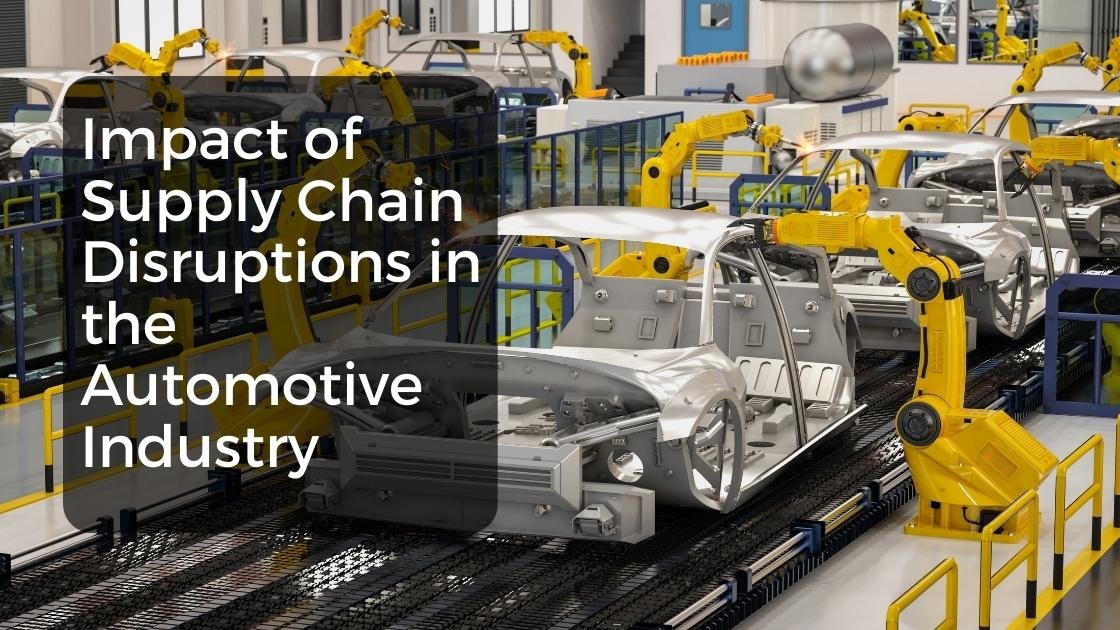In the modern automotive industry, supply chain disruptions have emerged as significant challenges that can significantly affect the production, distribution, and overall stability of the sector. This article delves into the various ways supply chain disruptions impact the automotive industry, exploring their causes, consequences, and the strategies adopted to mitigate their effects.
What are the Key Components of the Automotive Supply Chain?
The automotive supply chain comprises several key components that work in concert to bring vehicles from concept to consumer. At the foundation are suppliers, providing a diverse range of raw materials, components, and parts essential for vehicle assembly. Manufacturers, or original equipment manufacturers (OEMs), transform these inputs into finished vehicles, overseeing design, engineering, assembly, and quality control. The automotive supply chain comprises three key components:
Suppliers
These entities provide the raw materials, components, and parts needed for vehicle manufacturing. Suppliers play a critical role in ensuring the quality and availability of essential inputs.
Manufacturers
Also known as original equipment manufacturers (OEMs), these companies assemble components into vehicles. They oversee the entire production process, from design and engineering to assembly and quality control.
Distributors and Retailers
Distributors are responsible for transporting finished vehicles from manufacturers to dealerships. Retailers, commonly known as dealerships, connect the final product with consumers, offering sales, maintenance, and support services.
What are Supply Chain Disruptions?
Supply chain disruptions refer to unexpected events or factors that disrupt the flow of materials, components, and products within the supply chain network. These disruptions can range from natural disasters and geopolitical conflicts to labour strikes, transportation breakdowns, and technological glitches.
What are the Causes of Disruptions in the Automotive Supply Chain?
Disruptions in the automotive supply chain stem from diverse sources, including natural disasters like earthquakes and hurricanes. Geopolitical events such as trade disputes and tariffs can lead to supply interruptions. Additionally, economic fluctuations and sudden shifts in demand can disrupt the delicate balance of production and distribution. Component shortages, often driven by technological advancements or unexpected shifts in consumer preferences, further contribute to disruptions.
Geopolitical Events
Trade disputes, embargoes, and political conflicts can lead to interruptions in the availability of raw materials and components, impacting production schedules.
Natural Disasters
Earthquakes, hurricanes, and tsunamis can damage key manufacturing facilities, disrupt transportation routes, and lead to component shortages.
Supplier Bankruptcy
The bankruptcy of a critical supplier can lead to sudden interruptions in the supply of crucial components, affecting production timelines.
Technological Disruptions
Cyberattacks and IT system failures can disrupt operations, halt production lines, and compromise sensitive information.
Economic Fluctuations
Economic downturns can reduce consumer demand, leading to overstocked inventories and financial strain on manufacturers.
How Do These Disruptions Impact the Automotive Supply Chain?
These disruptions have a profound impact on the automotive supply chain. Natural disasters and geopolitical events can disrupt the flow of raw materials, parts, and finished products, leading to production delays and increased costs.
Production Delays
One of the most immediate impacts of supply chain disruptions in the automotive industry is production delays. When key components are unavailable due to disruptions, assembly lines can come to a halt, leading to missed deadlines and decreased production efficiency.
Increased Costs
Supply chain disruptions can result in increased costs due to the need to source components from alternative suppliers at higher prices. Manufacturers may also incur additional expenses for expedited shipping and transportation to mitigate delays.
Inventory Imbalances
Disruptions can lead to imbalances in inventory levels. Manufacturers may end up with excess inventory of finished products if demand drops suddenly, or they may face shortages if components are unavailable.
Customer Dissatisfaction
Production delays and quality issues resulting from disruptions can lead to customer dissatisfaction. Delays in delivering vehicles to customers can harm a company’s reputation and erode customer trust.
Financial Impact
The financial impact of supply chain disruptions can be substantial. Manufacturers may face revenue losses due to halted production, increased operational costs, and decreased customer demand.
Strategies to Mitigate Risks in Automotive Supply Chain?
Implementing effective strategies to mitigate risks in the automotive supply chain is essential to maintain smooth operations. Diversifying suppliers and sourcing regions reduces overreliance on a single source, minimising the impact of disruptions.
Diversification of Suppliers
Automotive manufacturers are increasingly diversifying their supplier base to reduce reliance on a single source. This strategy helps mitigate the impact of disruptions from a single supplier’s failure.
Enhanced Risk Assessment
Robust risk assessment and scenario planning enable companies to identify potential vulnerabilities and devise strategies to address various disruption scenarios effectively.
Technology Adoption
Implementing advanced technologies like data analytics, AI, and IoT can provide real-time visibility into supply chain operations, allowing for faster response to disruptions.
Collaboration and Communication
Collaboration among stakeholders, including suppliers, manufacturers, and logistics partners, is essential. Open communication channels facilitate quick problem-solving and enable proactive response to disruptions.
Inventory Management
Effective inventory management involves optimising inventory levels while considering potential disruptions. Many businesses are using Artificial Intelligence (AI) in Inventory Management to automate maintaining stock levels.
Business Continuity Planning
Developing robust business continuity plans ensures that companies can continue essential operations during disruptions. These plans outline alternative sourcing strategies and production adjustments.
Conclusion
Automotive supply chain disruption management continues to be a critical concern for the automotive industry. The multifaceted impacts, from production delays to financial losses, necessitate proactive strategies and investments in resilience. By understanding the causes, consequences, and mitigation strategies, automotive manufacturers can navigate disruptions more effectively and ensure a more stable and adaptive supply chain.
